How to Install Narrowed Beef Tubes for Xr Mod
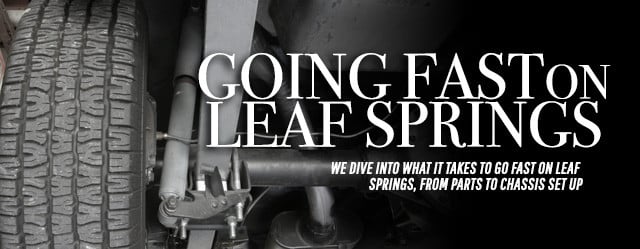
Before the days of every car leaving the factory with upper and lower control arms, or four-link suspensions, passenger cars had leaf springs that connected to either a car's unibody or frame fore and aft of the rear end, using a shackle to go between the frame or unibody at the rear. The leaf springs were attached to the rear end via U-bolts. Typically, the rear end had a locating pin on each side on the bottom of the rear end housing, and the anchor plate had a pocket for the rear end's locating pin to set pinion angle.
These days, however, anything other than a factory three- or four-link set-up sounds almost archaic; but thankfully, there are companies like Calvert Racing and Chris Alston's Chassisworks dedicated to making leaf spring drag racing vehicles as quick as any other suspension design.
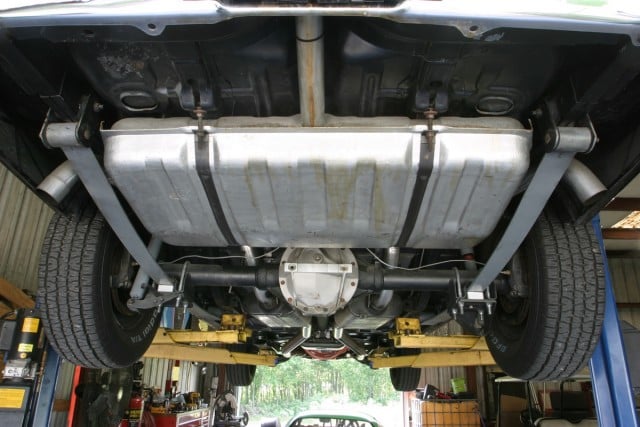
This is your typical leaf spring suspension setup. This particular set-up is a mono-leaf, which means it uses one leaf, not multiple leafs. Most factory leaf spring suspensions use multiple leafs, but most performance arrangements go to a single, or split-leaf arrangement.
Leaf Spring Suspension At A Glance
The leaf spring suspension we see in many muscle cars is called a semi-elliptical leaf spring arrangement, meaning there's one spring on each side and not two connected to each other to form a complete circle. Leaf springs actually date back to medieval times — that's how old the technology is — but these days, trucks are the only late model vehicles on the road that still use them.
In contrast, most cars today use a three- or four-link suspension using upper and lower control arms. A factory three-link has a single upper control arm, while a factory four-link suspension uses two upperand two lower control arms. Back in the '60s, though, there were also cars that had upper and lower control arms instead of leaf springs. The most popular of those were '64-'72 GM A-bodies like the Pontiac GTO/Lemans/Tempest, Chevrolet Chevelle/Malibu/El Camino/Monte Carlo, Oldsmobile Cutlass/442, and Buick's Skylark/Grand Sport. It's interesting that GM would have cars with both four-link and leaf spring suspension arrangements at the same time. Ford vehicles all had leaf spring suspension at that time, as did Mopar muscle cars. Arguably the most popular drag racing platform, the Fox Mustang, has a factory four-link arrangement with triangulatedupper and lower control arms, just like the older GM cars.
With a leaf spring arrangement, the front part (right) of the spring uses a pocket on the body to attach it. This is how it attaches on a Nova and a Camaro, and early Mustangs, for that matter. For full-frame cars, it attaches to the frame via either a shackle or a simple nut and bolt attachment. At the rear of this author's Nova, you can see the rear attachment point is on the frame rail, using a shackle.
These days, there are specific classes in drag racing for leaf spring cars. The most popular leaf spring race cars are Novas, early F-body Camaros and Firebirds, early Mustangs, most Mopar muscle cars, and S-10/Sonoma trucks, but can they compete with their four-link peers? That's the biggest question. And how do leaf spring set-up methods differ from four-link suspensions? Has technology left the leaf spring community behind, or are there new practices in place to improve 60-foot, 1/8-mile, and 1/4-mile times? These are just some of the questions we'll be addressing here.
Why A Leaf Spring Car?
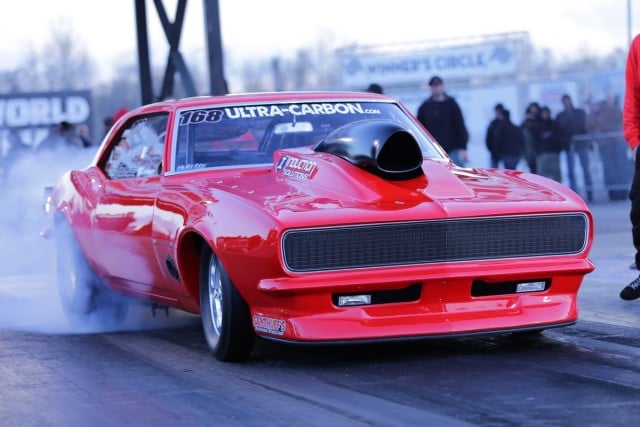
Ron Rhodes runs a BES 460-inch small block Chevy with 23-degree heads, an Induction Solutions single fogger, an NLR controller, and a Hutch Powerglide with a PTC converter.
With so many makes and models of rear wheel drive cars out there to choose from as a basis for a race car, and with an antiquated suspension such as the leaf spring arrangement, one must wonder why anyone would choose to start with a leaf spring car. Truly there are more popular choices with factory four-link suspensions that enjoy a large aftermarket following. However, of those cars mentioned above, there are some spectacular platforms in that list. For many racers, their choice comes down to what they have, or what's been passed down to them. Plus, Novas and Camaros were born for drag racing, which is the same for the Mopar muscle cars of the '60s. They were built to drag race, and they came from the factory with leaf springs because a better alternative hadn't come along at that time. Therefore, the classic muscle cars with leaf spring suspensions are still popular today.
For Leaf Spring and X275 racer Ron Rhodes, his Camaro was his first car, and he's seen no valid reason to run anything else. "I've continued using it because it's different in today's racing world," he adds. The fact that Rhodes can more than hang with the X275 guys is proof a leaf spring car can compete with its four-link, stock suspension competition. He just became the first nitrous car in the 4.40s and is one of just a handful of racers to ever run in the .40s, so that tells you how competitive he is.
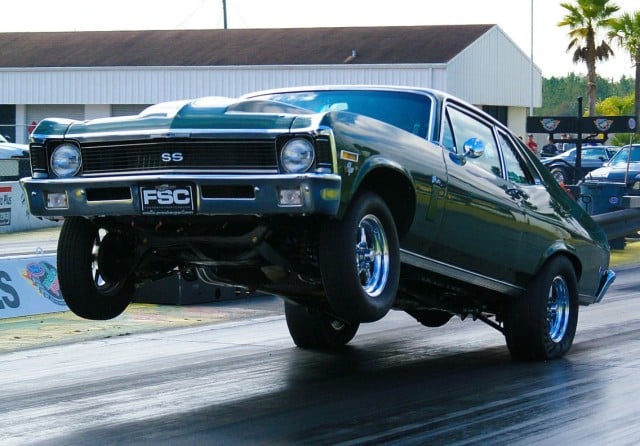
Derek Putnam's Nova features a Rollins Automotive-built 496 big block Chevy with AFR heads, a ProCharger D-1SC, Turbo 400 with an FTI converter, and a Strange Engineering-outfitted 12-bolt rear end with 3.55 gears. Photo courtesy of Thomas Gaines from Behind the Scenez Photography.
For National Parts Depot's Social Media Specialist Derek Putnam, he chose a leaf spring car because "I grew up around racing a stock suspension, small tire car with my dad's '67 Camaro, and having a single car that had to serve street and strip duty for my early driving years solidified my love for stock suspension, leaf spring cars. If someone runs a fast number on stock-style suspension versus a back-half, big tire car, I'm more impressed by it. I like and appreciate all forms and brands of our sport. I guess I've always liked doing more with less."
If anything is the automotive equivalent of doing more with less, it's a leaf spring car.
Differences Between A Leaf Spring And 4-Link Suspension
The biggest difference is obviously the fact that four-link suspensions use coil springs, control arms, and shocks instead of just leaf springs and shocks. When equipped with aftermarket adjustable control arms, the vehicle gains near-infiniteadjustment of pinion angle to help achieve ideal geometry at the launch, help pre-load the suspension, and adjust instant center. The control arms often come with brackets to permitseveral different mounting points from which to make adjustments, whereas the leaf spring only has the fore and aft mounting points on each end. With a conventional leaf spring suspension, pinion angle adjustments are made with shims between the axle housing and the anchor plate to adjust the pinion higher or lower.
When asked the question of how a leaf spring suspension is different than a 4-link, Ron Rhodes says, "We can't change our instant center, and it's an arched spring versus a coil spring. They (leaf springs) are very unforgiving on bumpy tracks." That's the biggest challenge to Rhodes with his program.

Axle Wrap
The biggest obstacle facing a leaf spring racer is axle wrap. Axle wrap is when the axle tries to wrap itself under the leaf spring. Basically, the leaf spring tries to turn itself into an 'S'. A traction bar, or Calvert Racing's CalTrac bar is designed to eliminate axle wrap by stopping the rotation of the leaf spring.
John Calvert of Calvert Racing says, "Dealing with limited tire sizes is your typical challenge regarding leaf spring cars. Owners usually are reluctant to modify their cars for the tires that would make hooking a snap. So initial tire spin will be the resulting challenge."
"If we look at conventional leaf spring cars and compare the changes made when going to a four-link or ladder bar, the leaf springs are removed, some of the body is removed and replaced with the brackets needed to support the new system," continues Calvert. "The new system allows a multitude of instant center adjustments and is fine for straight line acceleration, but lateral movement is a bit compromised. Panhard bars, anti-roll bars, wishbones, or Watts links are typically added for the built-in stability that a leaf spring system had. Many leaf spring vehicles are still a street-strip affair, but converting to a four-link pretty much finishes the street side and now the car becomes drag race only. I feel in the long run we may find, as in street use, an advantage in stability to the leaf spring cars while going down the track. So far, six second quarter miles at over 200 mph…and a best sixty foot of 1.03."
Calvert Racing's split mono-leaf and CalTrac bars, like what Derek Putnam uses (and pictured here) are the choice modifications for many a leaf spring racer. The split mono-leaf springs are considerably lighter than the factory leaf springs to reduce unsprung weight, and you can choose a ride height, as well. The split mono-leafs are designed to work with Calvert's CalTrac bars. The CalTracs are designed to keep the axle from rotating, thereby maintaining proper pinion angle. The CalTracs also allow full preload adjustability, and they're designed to eliminate axle wrap, as well.
How Are Adjustments Made To A Leaf Spring Car?
Unlike a four-link car, which can be adjusted via control arms, shock, and strut settings, a leaf spring suspension is adjusted in a different way. It's mostly shock and strut settings that have a big impact on how a leaf spring car reacts at the launch.
Calvert tells us, "Making adjustments to leaf spring cars is the same as for any other car; the exception will be in the back. When using CalTracs, changing instant center comes from the link attaching point (upper or lower hole). Overall pre-load settings affect the action in the back of the car and pre-load on one side or the other helps steer the car while the front wheels are in the air, much the same as an upper bar in a four-link or an anti-roll adjustment."
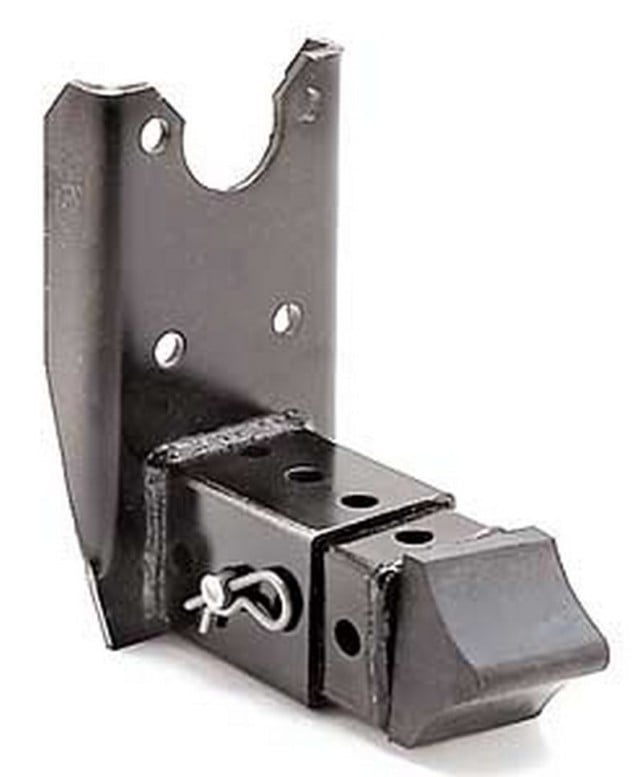
Though most of our focus has been on Ford and GM cars, Mopar aficionados already know about Super Stock springs, which were heavy-duty leaf springs initially designed for 1968-'69 Super Stock Barracudas. When even those weren't enough, Mopar enthusiasts added a pinion snubber, seen here. The snubber is installed to keep spring wrap at bay, like CalTracs. The snubber comes in contact with the body, which in turn keeps the springs from wrapping under the axle, and it also pushes down on the axle to provide traction.
For Putnam, when it comes to making adjustments to his Nova's leaf spring suspension, he says, "Using the right parts has made adjustments to my car's suspension minor — that is until I changed drivelines. The most substantial change I'd make is moving the rear shocks to a softer setting when I run off a transbrake versus foot braking the car. Swapping from a 500 horsepower small block with nearly 50/50 weight balance to a 970 horsepower big block and a 200-pound nose heavy-stance has shown me that standard 90/10 front shocks are not optimum for the car. It will wheelie easily and bounce when the front end comes back down, and that has made a pass with full power right from the starting line not possible (for fear of hitting the bumper). Adjustable front shocks to control the launch will help, and of course track time will get us set-up right."
Older Technology, But New Techniques
Even though the leaf spring is an archaic design, it benefits from current technology. The benefits don't really come from the leaf spring design, because you can't really revamp the original design without doing away with it. However, the technology that has helped leaf spring set-ups has more to do with technological advances in tires, shocks, and different materials used in leaf spring construction.
Rhodes uses Caltrac bars, which he says, "lets us control some pre-load on the bars and also help steer the car if it doesn't track right. Calvert has really helped the leaf spring crowd with his products. He has taken an old design and made it better with today's technology. Shocks have come a long way, as well. Santhuff really helped our car and the company now offers a shock specifically for leaf spring cars."
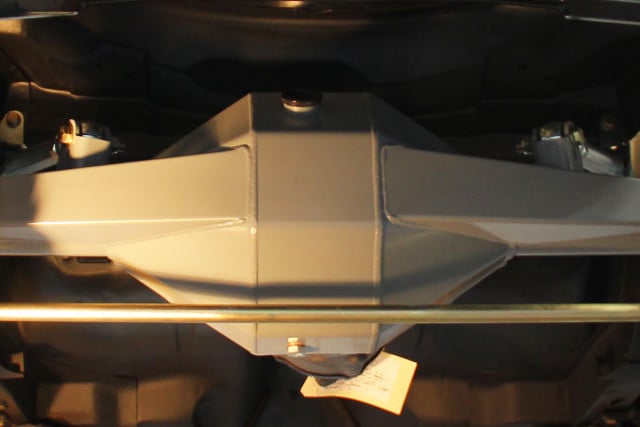
Everyone we talked to for this story mentioned shock technology has helped leaf spring cars be competitive. Here is a VariShock set-up on a factory leaf spring suspension. Notice the multiple leaf arrangement. VariShock has applications for leaf spring-equipped Camaros, Novas, early Mustangs, and Mopar B-, E-, and some A-bodies. Notice the shocks are inboard, whereas on Putnam's Nova, the shocks are in the stock location. The outboard shock location makes it tough to put any sizable tire under many cars.
Likewise, Chris Alston's Chassisworks' senior sales technician Mike Weddle says, "The availability of anti-roll bars and adjustable shocks (Chassisworks boast their line of Varishock shocks) makes the leaf spring arrangement work a lot better than it used to. We have single adjustable shocks, which you can adjust 16 ways. The compression and rebound are adjusted at the same time."
Double adjustable shocks allowcompression and rebound to be adjusted separately. There are 256 different adjustment combos with the double adjustable shock. The adjustable shock is really important with a leaf spring combination. Using an adjustable shock with a wide range of adjustability comes in handy."
Continuing on the topic of shocks, Calvert adds, "Technology has helped. Shocks are more tailored to needs, tire quality and compounds improved, and yes, the spring itself make leaf spring cars more efficient now than twenty years ago."
"In the beginning," Calvert continues, "controlling leaf spring wrap up was the main goal of a 'traction device.' Now we look at instant center, down pressure, action in the back, travel up front, and the speed at which the front reacts. So when considering a package, the components considered would be front shocks, front springs, rear shocks, rear springs, and the traction device."
Most Common Modification For Leaf Spring Cars
As for the most popular modifications for leaf springs, it's a 50/50 split between mods to the leaf spring arrangement, and the car itself. When asked what the most common modifications are John Calvert says, "As far as leaf spring cars go, the most common is slight modification of the rear wheel well to allow a slightly larger rear tire to be used. After that a move inboard of the leaf springs using an offset rear shackle and maybe a mini-tub allows an even larger rear tire, which normally is sufficient for most drag race applications.

Chris Alston Chassisworks' Fab9 housing enables the addition of a stout rear end, while keeping the leaf spring suspension. This particular housing is a direct bolt-in for 1967-'69 Camaros and 1968-'74 Novas, but the company has a Fab9 housing for pretty much every factory leaf spring application.
"In regards to the leaf spring itself, we've tried many different combinations over the years — multi-leaf, multi-leaf with an added thick leaf, multi-leaf with very thick leaves, multi-leaf with only one back leaf (suspend the car with coil over shocks), mono-leaf, parabolic mono-leaf, and split mono-leaf. The latter is our current preference," Calvert says.
Putnam's current set-up uses Calvert Racing split mono-leaf springs (stock ride height), Rancho/Calvert Racing 9-way adjustable shocks (purchased back in 2005 when Rancho sold them; now sold under Calvert's name), CalTracs (bars in upper front hole), Global West shackles, and Delrin/aluminum bushings.
On his Camaro, Rhodes uses a Chris Alston Fab9 housing, and like Putnam, Calvert Racing leaf springs and CalTracs, but Rhodes' Camaro differs in the fact that he runs Santhuff shocks and a TRZ Motorsports anti-roll bar.
It's amazing the difference a spring can make" – John Calvert

Common Mistakes With Leaf Spring Suspensions
With any suspension arrangement, mistakes can be made which will set back any racing program. With a leaf spring arrangement, since the design is already light years behind that of a four-link coil spring design, the margin of error is slim. Therefore, it's imperative to not battle the set-up, and find what works best sooner, rather than later. For Weddle, he says the most common mistake made is not using a good shock. "Most people just get a heavy duty shock, but that isn't the most optimum."
"Consistency of the launch becomes the first area of need," says Calvert. "The most common mistake we see is treating a small tire car like a big tire car. The trans brake racer — too high of a starting line RPM, which causes the initial spin. The four speed racer — too much base pressure, too much air gap, and too violent of clutch engagement, which causes the initial spin. The foot brake racer — no two-step, which causes inconsistencies in the launch. So what we need is a smooth transition of power to the small back tires to allow them to generate a coefficient of friction that the suspension needs to do its job."
However, as proven by Rhodes and Putnam and countless other leaf spring racers, the archaic design is still capable of competing with the most current four-link suspension set-ups.
Source: https://www.dragzine.com/tech-stories/chassis-safety/how-to-going-fast-with-leaf-spring-suspensions/
0 Response to "How to Install Narrowed Beef Tubes for Xr Mod"
Post a Comment